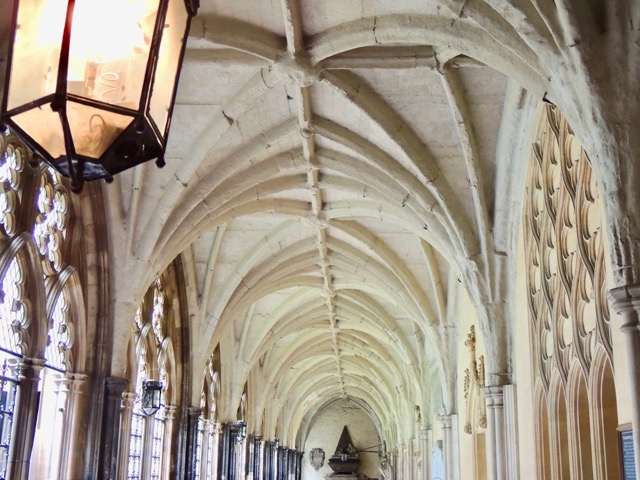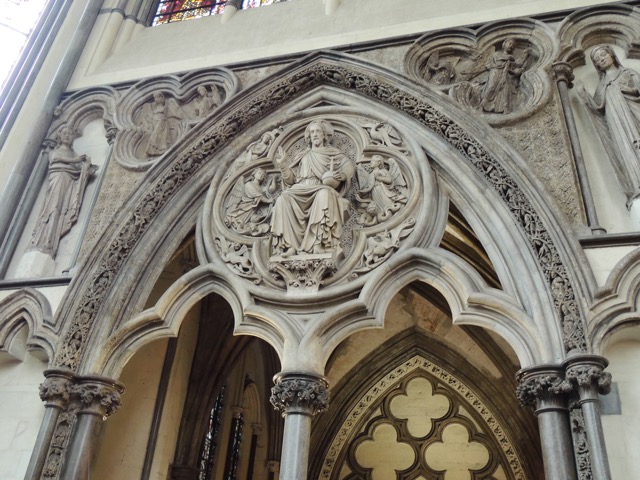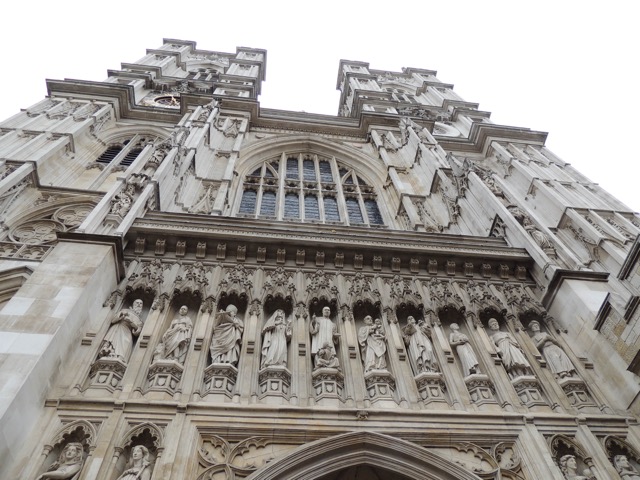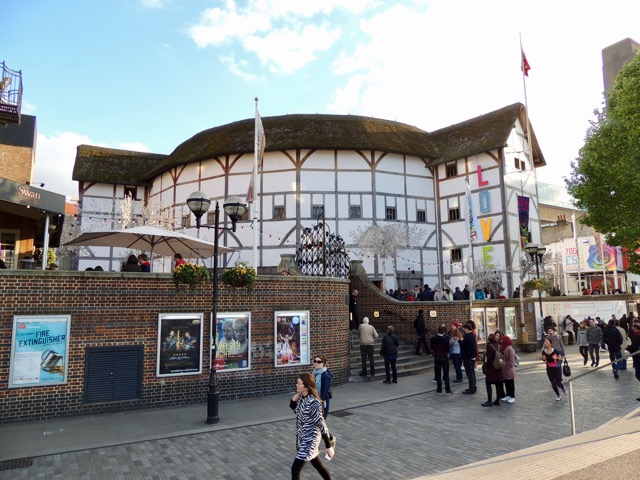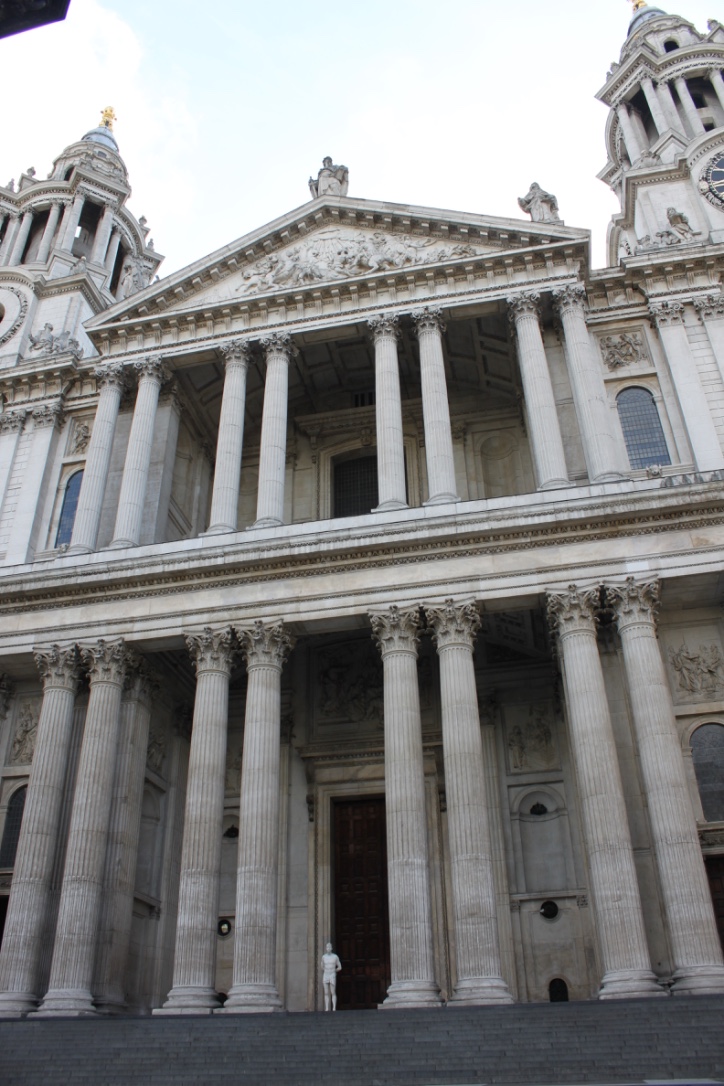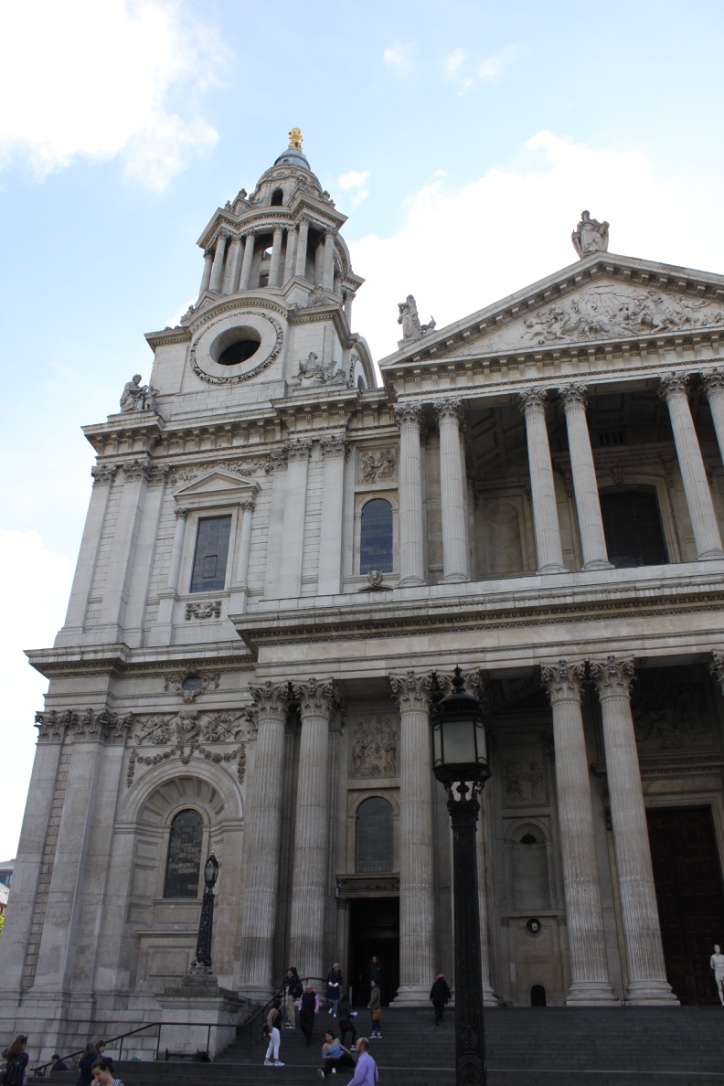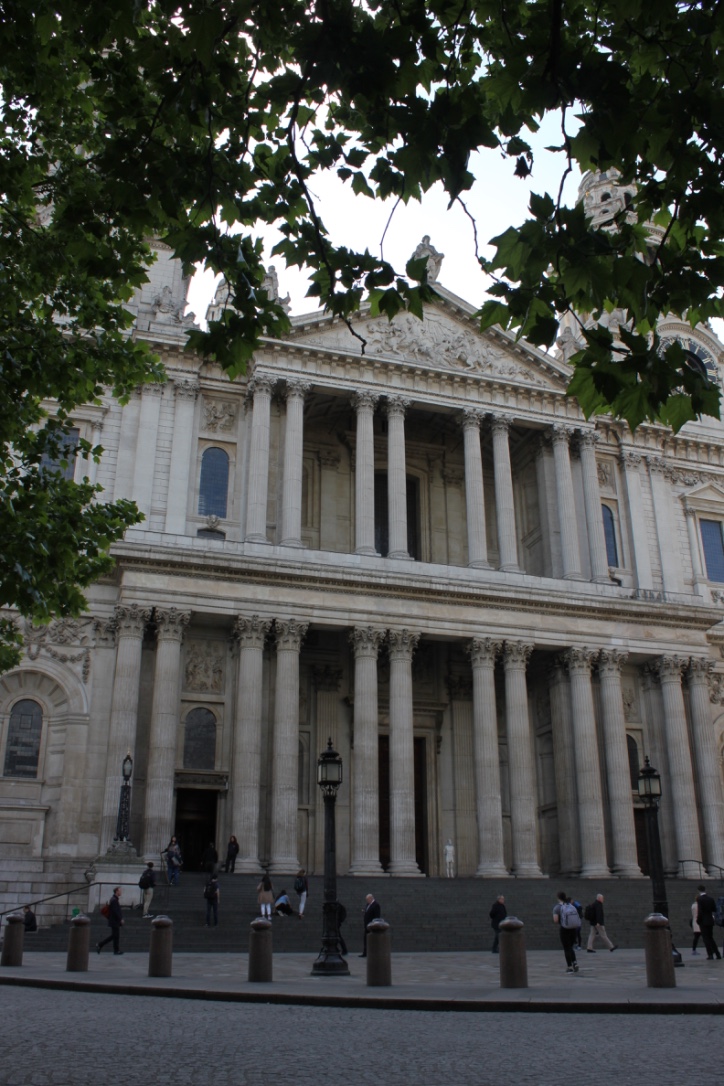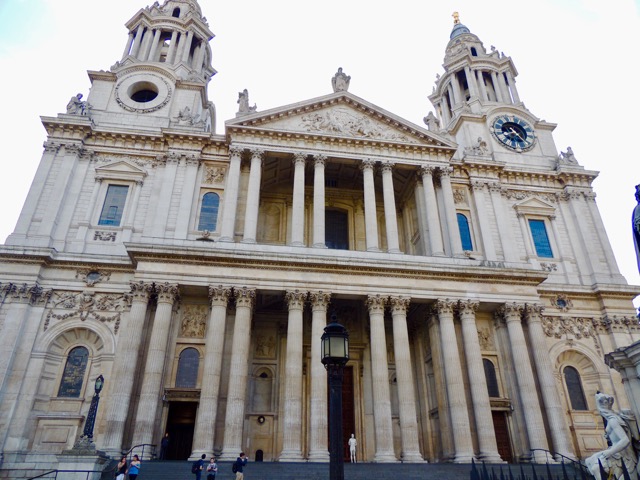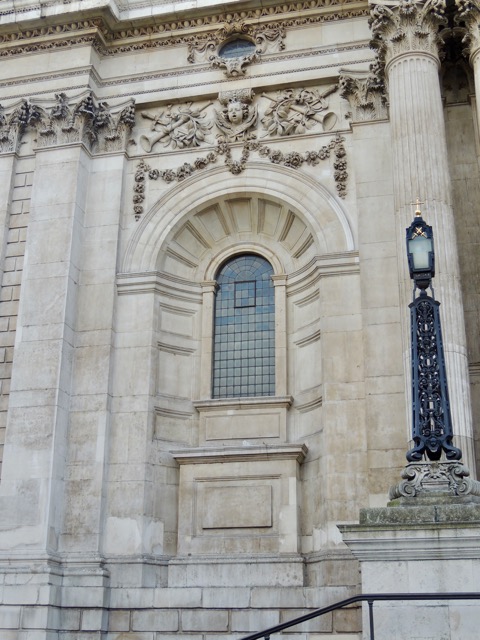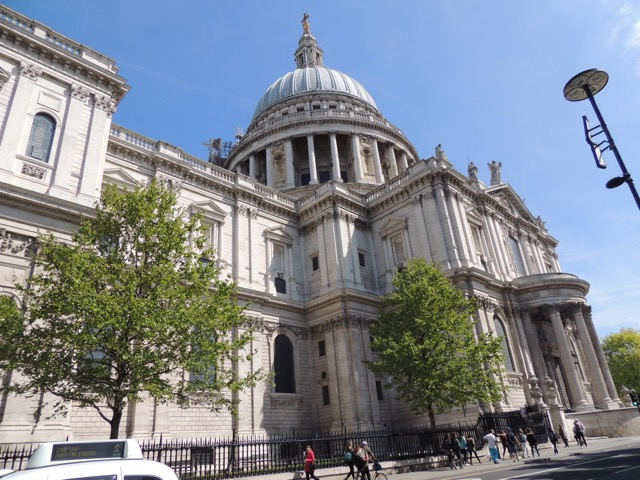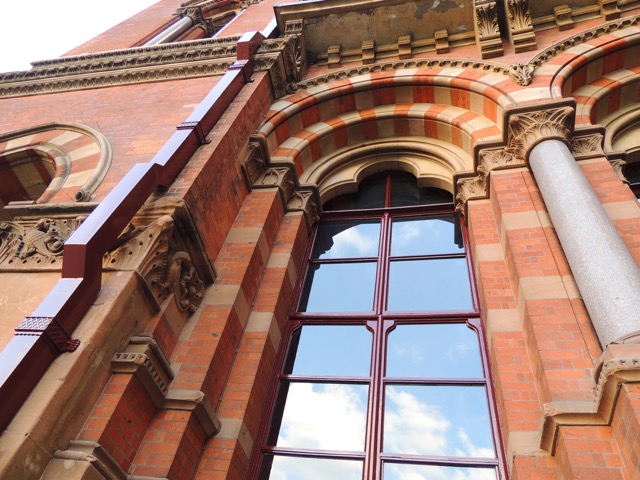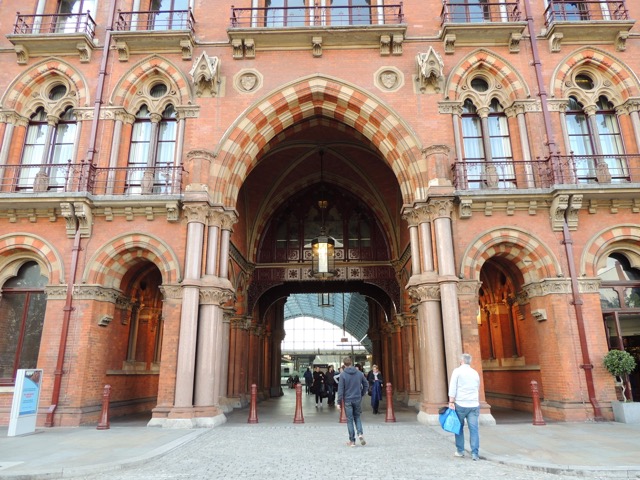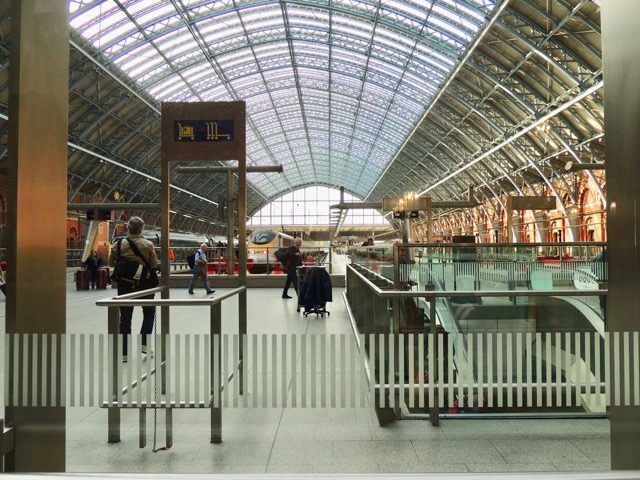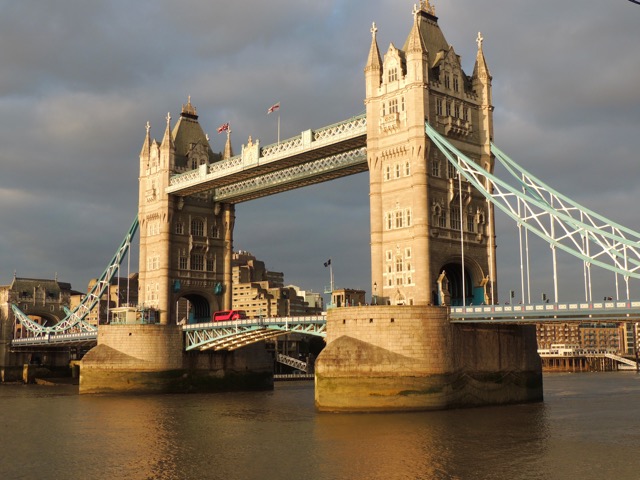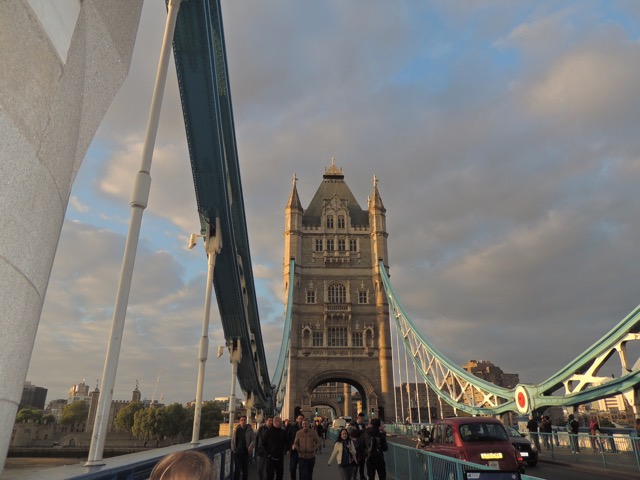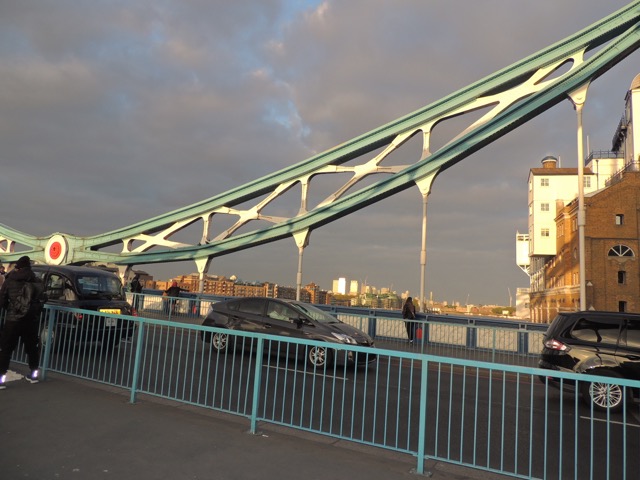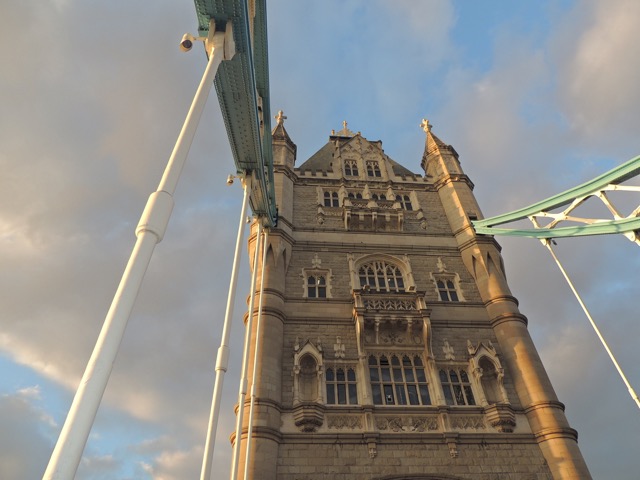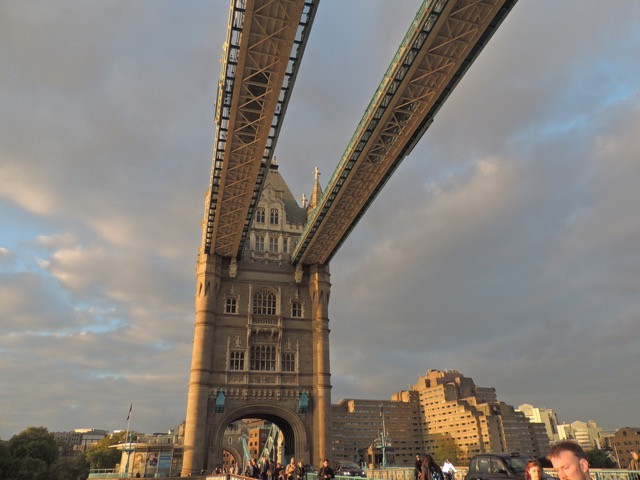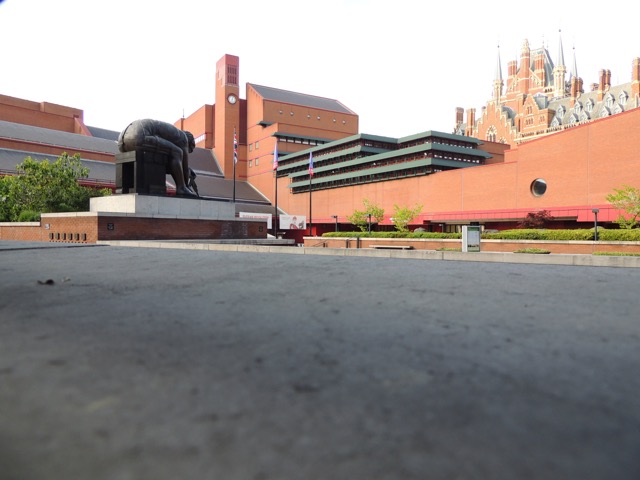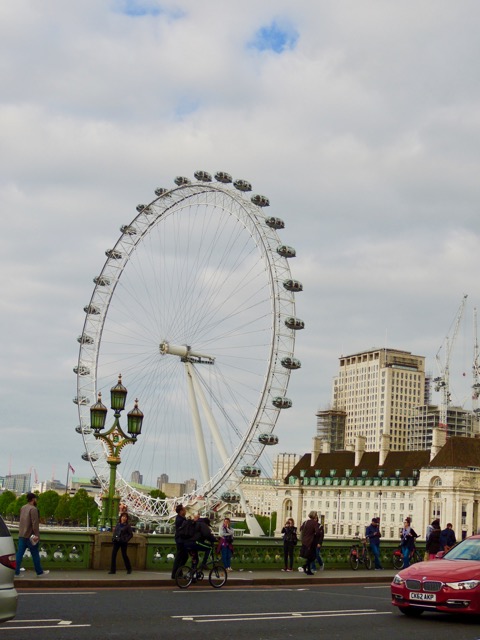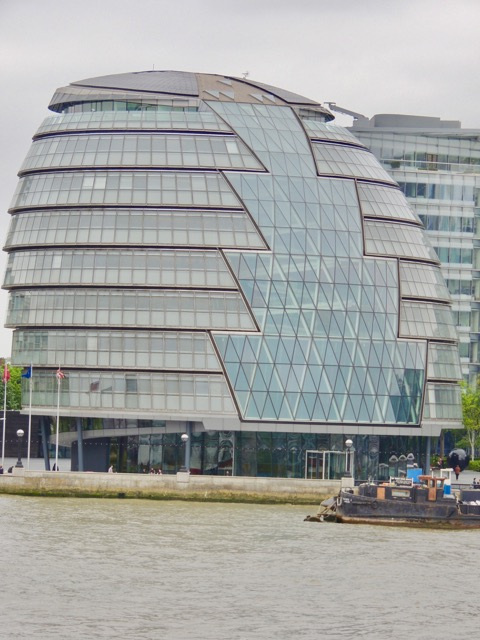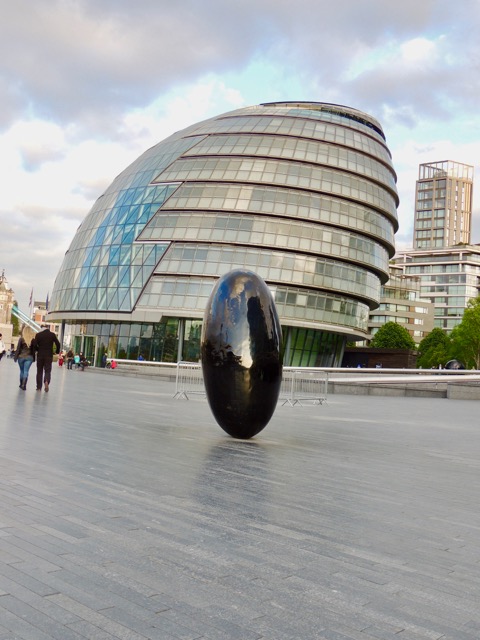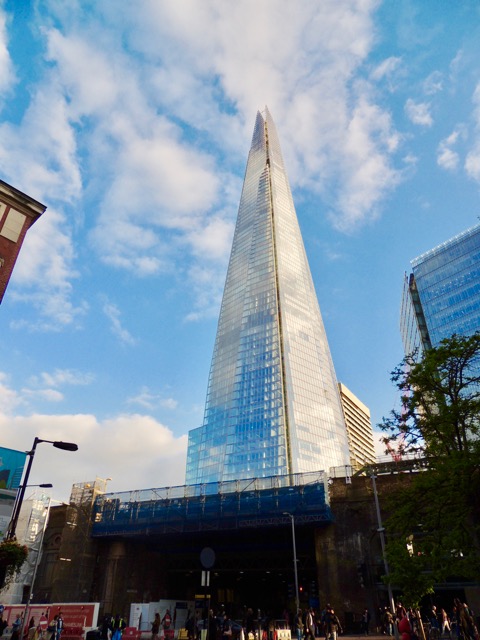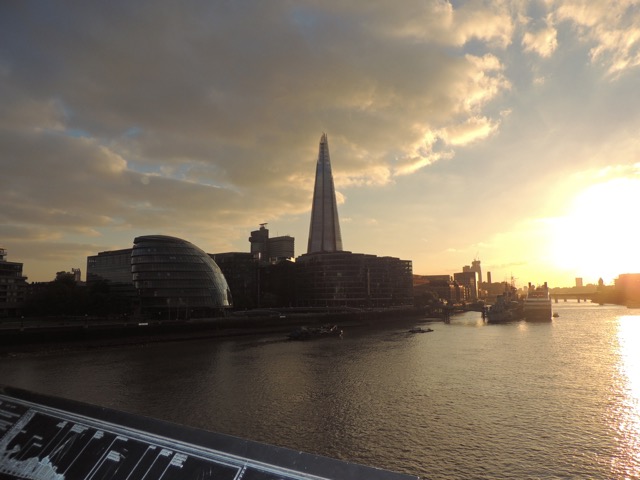London Architecture
From Londonhua WIKI
Top 20 Architectures
by Olivia Gibbs, Natalie Bloniarz & Emily Wilson
 Your Project Page Picture Caption |
Contents
- 1 Top 20 Architectures
- 2 Abstract
- 3 Introduction
- 4 Section 1: Background
- 5 Section 2: Comparisons
- 6 Section 3: Deliverable
- 7 Conclusion
- 8 References
- 9 Attribution of Work
- 10 External Links
- 11 Image Gallery
Abstract
The paragraph should give a three to five sentence abstract about your entire London HUA experience including 1) a summary of the aims of your project, 2) your prior experience with humanities and arts courses and disciplines, and 3) your major takeaways from the experience. This can and should be very similar to the paragraph you use to summarize this milestone on your Profile Page. It should contain your main Objective, so be sure to clearly state a one-sentence statement that summarizes your main objective for this milestone such as "a comparison of the text of Medieval English choral music to that of the Baroque" or it may be a question such as "to what extent did religion influence Christopher Wren's sense of design?"
Introduction
I suggest you save this section for last. Describe the essence of this project. Cover what the project is and who cares in the first two sentences. Then cover what others have done like it, how your project is different. Discuss the extent to which your strategy for completing this project was new to you, or an extension of previous HUA experiences.
As you continue to think about your project milestones, reread the "Goals" narrative on defining project milestones from the HU2900 syllabus. Remember: the idea is to have equip your milestone with a really solid background and then some sort of "thing that you do". You'll need to add in some narrative to describe why you did the "thing that you did", which you'd probably want to do anyway. You can make it easy for your advisors to give you a high grade by ensuring that your project milestone work reflects careful, considerate, and comprehensive thought and effort in terms of your background review, and insightful, cumulative, and methodical approaches toward the creative components of your project milestone deliverables.
Section 1: Background
10th Century
Westminster Abbey
In stark contrast to the appearance of St. Paul's Cathedral, Westminster Abbey was created in the Gothic style. It was opened in 1090, but due to its long period of construction, the abbey transitions into the Neo-Gothic style with the addition of the western tower. This imposing church with its tall spires, pointed windows, and stained glass windows, serves to exemplify the Gothic Style. The abbey had its final construction completed in 1745, though is currently undergoing construction to make it more accessible to the handicapped. Westminster Abbey is home to all of the coronations of the British monarchy since 1066, the coronations of both King Harold and William the Conqueror. It also serves as a place for royal weddings and christenings.
more will be added later
Links
14th Century
The Jewel Tower
The Jewel Tower is one of three remaining buildings from the medieval Palace of Westminster with a lot of its 14th century architecture still remaining relatively unchanged. The building was constructed in the early 1360's, and at that point until the early 16th was used to store the royal jewels and plate which is how it got its name. From the 16th century until 1864 however it was used to store the records of the house of Lords, which is considered the nations 'memory'. The Jewel Tower shows the evolution form state, to monarchy, to parliamentary democracy, to an imperial power.
It was built as a medieval treasury, so there are no windows on the ground floor and only two small windows on the first floor. Form the remains they believe there were to double doors at the entrance to the top floor. They believe this level contained particularly sensitive or valuable items. The master mason who worked on this building was Henry Yevele and master carpenter Hugh Herland, the used rough stone and dressed stone to construct the tower. This was built in a medieval style, however unfortunately many of the medieval features have been defaced or removed when renovations were made to the building.
Observations that were made presume that the building was a very functional building and it did not have many ostentatious features. A lot of the information on this building are presumptions because of its age. They believe because of the distinctive shape of the windows mean that Architect Nicholas Hawksmoor helped in designing the buildings.
http://www.english-heritage.org.uk/visit/places/jewel-tower/history/significance/what i
16th Century
Shakespeare's Globe
21 New Globe Walk, London SE1 9DT
Shakespeare Globe today stands a few hundred feet from its original site but it was first built by carpenter Peter and his workers in 1597/1598 out of timber, nails, stone (flint), plaster and thatched roofs. It was built to look similar to Roman Coliseum but on a smaller scale. They believed if they had a similar building than they would give them an aura of respectability. The original building was excavated and then learned it had twenty sides and one-hundred feet in diameter. It was also discovered the type of wood used, but never knowing exactly what the stage looked like. 'Techniques used in the reconstruction of the theatre were painstakingly accurate. ‘Green’ oak was cut and fashioned according to 16th-century practice and assembled in two-dimensional bays on the Bankside site; oak laths and staves support lime plaster mixed according to a contemporary recipe and the walls are covered in a white lime wash. The roof is made of water reed thatch, based on samples found during the excavation.' The Shakespeare Globe architect Jon Greenfield, explains, 'The Globe was built as an experiment to investigate the lost open-air playhouse form of drama in all its aspects. It is vital that there is a continual process of re-assessment, that all the judgments made during construction are re-evaluated when new evidence or new interpretations surface, and even that the old arguments, so hotly debated before construction, are continually re-rehearsed.' NEED LOTS MORE INFO and PICS To learn more about current shows check out their website: globe
17th Century
Kensington Palace
William III and Mary II purchased Nottingham house which was a Jacobean mansion that was built around 1605. They hired Christopher Wren to work on it, and in order to save money and time he added pavilions to the four corners of the Jacobean house and he used red brick for the material. 1670 Mary did another round of improvements by adding in the Queens Gallery. It had its very own staircase and gave a space for her Maids of Honor. In November of 1961 a fire destroyed part of the Great Court, which allowed for a remodel of the royal apartments. The kings staircase was rebuilt, this time in marble, and a Guard Chamber was constructed. The final addition to the Palace by William was done in 1695 which was the the South Front of the building. When Queen Anne took the throne she tended to renovating the gardens. She spent of 26,000 pounds on building garden buildings, and some are still standing today. When George I came into the palace he commissioned a dramatic rebuild in order to be better then Blenheim Palace. In 1718 the renovation as done by William benson. King George was a big fan of William Kent's work and commissioned him to elaborately decorate the Cupola Room of Nottinghouse, the center of the palace. Through the 19th century there was not a lot of care done for the palace. When Queen Victoria was raining there were ideas to demolish it or change it into a museum or gallery. Queen Victoria however refused to destroy the place she was born. A restoration process took place to restore it as close to as possible the way it looked during George II reign. In 1899 the state apartments were opened to the public and it was both the public museum and a royal home. In 1910 the Kensington Palace was opened to the public as a museum to display objects that had to do with the City of London and royal relics. In 1914 the museum was moved and the state apartments at kensington palace were used as office space during the First World war. The palace was not reopened until 1923. During the second world war however there was bomb damage and it caused it to close until 1949. Nowadays Kensington is again a home for members of the royal family.
http://www.hrp.org.uk/kensington-palace/history-and-stories/a-building-history/#gs.null
St. Paul's Cathedral
The current version of St. Paul's Cathedral that people are able to visit today was completed in 1711 in an English Baroque style, though originally it was a Gothic style cathedral. Christopher Wren the architect wanted the redesigned cathedral to be both grand and functional, s symbol for the Church of England. Wren chose to construct his masterpiece out of Portland stone, which is a type of limestone from an area of Portland in Dorset; he used this so that the cathedral would have a light and beautiful interior. His design was unlike any other Anglican cathedral, in that it had characteristics of Roman cathedrals. The dome, rounded arches, portico, and the columns are all elements of the Baroque style of architecture that he included. It gains the title of English Baroque because it is much more elaborate than its plainer counterparts. This stylist overhaul created by Christopher Wren was only possible because the cathedral had been heavily damaged by the Great Fire of London. Over the 39 year period of construction, from 1675 to 1711, Wren oversaw the entire construction, living to see the cathedral's completion.
Links
https://www.stpauls.co.uk/history-collections/history/cathedral-history-timeline
18th Century
Buckingham Palace
The Buckingham Palace we know today has been worked on by many architects including John Nash, Edward Blore, Aston Webb, William Winde,James Pennethorne, and Thomas Cubitt. It was built in the Neoclassical style. The first build was in 1703 and was later redone in the 1820s when King George wanted a renovation. The last major construction was in the 1840's so Queen Victoria could have more space for her family. The material used to construct the palace was Caen stone, which is usually reserved for important religious buildings. When John Nash did his renovation however the palace was refaced in bath stone. In 1913 the Palace was refaced again in Portland stone as one of the first acts of conservation. The Buckingham Palace was first considered Buckingham house and was not used for its now purpose as the home of the Royal Family until Queen Victoria.
19th Century
St Pancras Station & Hotel
Euston Rd, Kings Cross, London N1C 4QP
St Pancras Station opened in 1868 (but the hotel and station weren't completed until 1876) becoming one of the most elegant stations in the world. It is an exquisite example of Victorian Gothic Architecture.TAKE PICTURE & MORE INFO It was first built by Midland Railyway Company (MRC) led by head engineers William Henry Barlow and Roland Mason Ordish along with architect George Gilbert Scott who's job was to create a connection from London to other major cities in England. MRC wanted to make a grand statement for their company which they successfully accomplished. Not only is it gorgeous from the outside but the functions inside where advancements at the time for trains by having the platform deck raised above so the steam engines can pass over the Regent’s canal. Also, the space below known today as The Arcade, was designed to store and sell beer. Most noticeable feature is the roof of the station, the iron ribs create a 100ft high, 240ft wide and 700ft long arch, which at the time was the longest spanning one rib. This roof design has been copied all over the world including New York's Grand Central Station. The hotel architecture all around complements the trusses which form at the top of the ribs. TAKE PICTURE. Both the hotel and station were bombed multiple times during World War I, but it was the fifth bomb that caused the most casualties and destroyed the Booking Office roof which has since been replaced with a simpler one. Again during World War II more bombs had been dropped from air raids destroying the underground workings, but with time they had been reconfigured. The station underwent an expansion to fulfill the modern international train system. It included doubling it's length, and an additional 6 new platforms but to preserve Scott and Barlow’s original design a separate extension was constructed in concrete, glass and steel. The greatest change though was converting the beer cellar to station facilities. The renewal was reopened by the Queen on November 6th, 2007 after taking three years to work on.
Royal Albert Hall
Tower Bridge
Constructed over 8 years, the Tower Bridge was constructed to create another path for people to journey across the river Thames, but it faced the problem that it could not off access to the ports. A multitude of designs were submitted in competition, but the one that was chosen was from Sir Joseph Bazalgette, and the architect appointed was Sir Horace Jones. The design consisted of two bridge towers with two leaves that could be raised to allow for ships to pass, and as per a requirement it was made to be the Gothic style. When Jones died at the beginning of the construction, a new architect was brought on: George D. Stevenson. Stevenson proceeded to slightly alter the style to be Victorian Gothic, a more elaborate style than its predecessor. When the bridge was complete in 1894 it was opened officially by King Edward VIII. Pedestrian traffic originally had no toll to pay caused the local underground station to have closed due to lack of funding.
Progressing forward to World War II, the suspension mechanism was modified to protect against attacks. In 1974, the bridge went under modernization replacing the old inefficient engines with a modern hydraulic system. Later in 1982, the Tower Bridge Exhibition was opened, creating a greater tourist attraction at the bridge. The exhibition was held between the two towers along the upper walkway and engine rooms, allowing for views of the skyline of the city and includes a portion with a glass floor added for the more thrill seeking visitor. Over four years, starting from 2008, Tower Bridge underwent a renovation to restore and revamp the facade, repainting the the suspension cables blue and white and installing lighting along the the pedestrian walkways allowing the bridge to be lit up a multitude of colors. In preparation of the Olympics in 2012, the Olympic rings were hung to commemorate the event, taken down shortly after the closing ceremony; this was also completed in a similar fashion when the Paralympics were held.
Tower Bridge is 800 feet across with the top of its two towers reaching a height of 213 feet. It allows for two lanes of traffic, beside are two pedestrian walkways protected from the traffic by fences. The bridge is opened upon requests from ships and opens around 800 times a year at every time of the day. In an attempt to preserve the bridge, speed limits and weight restrictions are being enforced and monitored by cameras and sensors installed along the bridge road.
Links
- http://www.towerbridge.org.uk/bridge-history/
- http://www.telegraph.co.uk/travel/destinations/europe/united-kingdom/england/london/south-east/london-bridge/articles/Tower-Bridge-fascinating-facts-and-figures/
- http://www.bridgesdb.com/bridge-list/tower-bridge/
The Royal Exchange
The first Royal Exchange was built as the center for trading stocks in London. It was built in 1566 by Thomas Gresham in the Neoclassical style and was opened by Queen Elizabeth I in 1571. In 1666 The Royal exchange was destroyed in the Great Fire of London, and a second site opened up in 1669. This building was designed in a Baroque style by Edward Herman. The second Royal Exchange was also destroyed by a fire in 1838, which leads us to the third and current Royal Exchange. In 1844 there was an architectural competition to deign the third Royal Exchange and Sir William Title wins, and builds it as its originally layout from the first Stock Exchange. He however added eight columns to the entrance, which was inspired by the Pantheon in Rome. The building was opened by Queen Victoria in 1844. Since then the Royal Exchange has been home to stock trading, theater shows, and now a luxury shopping mall. The building was constructed out of concrete.
http://www.theroyalexchange.co.uk/heritage/
20th Century
Welbeck Street Car Park
This carpark was deigned for Debehams department store in 1971, and it can be seen as a block-sized sculpture. It was made with diamond shaped concrete panels that lock together to form a patter. It was designed by Michael Blampied, with a frame that is open to the outdoors which allows for ventilation of fumes from the building. With its pure concrete nature, it can be seen as a true part of the infrastructure. This is another great example of when architecture and transportation are combined.
http://www.telegraph.co.uk/finance/property/pictures/10171469/Lesser-Known-Architecture-Londons-most-unappreciated-buildings.html?frame=2613864
The British Library
After separating from the British Museum in 1973, The British Library began construction in
Style
Brutalist/ Scandinavian modernism
Designer
Colin St John Wilson
Material
Needs more research
Date Built
Finished in 1998
Purpose/ function
National library of the UK, library with the second largest number of total items in the world
Facts
- The middle contains a 6 story glass tower containing the King's library
- Largest public building constructed in the UK in the 20th century
- 300 km of shelves
- Outdoor courtyard
Links
Barbican Center
Silk St, London EC2Y 8DS
The Barbican Center is Europe's largest multi-arts and conference center venue. It took over a decade to build and was opened by the Queen in 1982. It contains The Hall (for concerts of 1,943 people), Theatre ( for shows holding 1154 people), The Pit (which is a 164 seat studio theatre), three Cinemas, an art gallery, The Curve (an exhibition space), Conservatory (home to exotic fish and over 2,000 species of tropical fish),library and restaurants. It was designed by architects Chamberlin, Powell and Bon who was working to recreate an area of London that was destroyed during World War II. The theme was to create a utopian vision, which resulted in Europe's best example of Brutalist architecture. Brutalist architecture is what flourished from the 1950s to the 1970s after the modernist architecture. It is synonymous of concrete since that is the main material used for all brutalist buildings including the Barbican. The unique concrete ziggurat design allows different locations throughout for people to enjoy, however it is also controversial with many Londoners describing it as the ugliest building. This is similar to project architect John Honer who later worked on the British Library at St Pancras – a red brick ziggurat.Over the years, different architects have tried to enhance and embellish the building to make improvements for the people. Including the circulation improvement by architect Allford Hall Monaghan Morris in 2005-2006 included creating an internal linkage bridge from Silk Street entrance to lakeside foyer area.
Please note the Barbican Estates was constructed before the Barbican Center and is a neighboring building in similar style.
To learn more about current events going on at the Barbican check out their website: Barbican
The Lloyd’s Building
One Lime Street, London, England, The City EC3
The Lloyd’s building is home to Lloyd's of London Headquarters. It was designed by the architect Richard Rogers and took eight years to build. 33,510 cubic meters of concrete, 30,000 square meters of stainless steel and 12,000 square meters of glass were used during the construction. This skyscraper was officially completed in 1984 and brought a high-tech architectural aesthetic to the medieval financial district of London. What makes it different is all the ductile work can be seen on the outside unlike other office building where it is typically tucked inside. The stairway itself is on the outside too, as seen in the image the six towers of stairs is what is typically notice by tourists first. The real advancement in architecture here is the internal atrium, which means all bathrooms, stairwells, kitchens etc. are all on the outer edge so as to not disturb the business inside. This also allows easy access to these departments so things can be replaced and fixed quickly and without disturbing the work being conducted. The stainless steel towers juxtaposition right next to the utilities show the mix of modern with technology. The cranes from the building were left on the top of it to highlight again the advancement and overlooking into modernism.
To see more about current business within the Llyod's building check out their website: Llyod's
21st Century
London Eye
The London Eye is the largest cantilevered observation wheel at a hieght of 135 meters. Its style can be considered modern, it is a new take on the traditional ferris wheel. It was designed by Marks Barfield Architects as a part of a competition to best celebrate the turn of the century. The base of the London Eye is made of a steel A frame, and the wheel part of the London Eye is connected to the rim by cables. Because of these heavy duty materials the London Eye can withstand winds up to 50 miles per hour. It was Launched in 2000 to celebrate the millennium, with 32 capsules on it representing the 32 boroughs of London. Originally it was built to be a temporary structure, made so that they could dismantle it and move it. It was only supposed to be in its location for 5 years but it became such a tourist attraction and staple it is now a permanent addition to the London skyline.
The Gherkin
30 St Mary Axe, London EC3A 8EP
The tall cigar or pickled shaped 180 meter building that lines the London skyline is The Gherkin. From the very beginning of the design it had been a controversy building. The new radical design of size and shape quickly gave it the nickname, 'the erotic gherkin'. Having been the location of previous bomb landings and in the middle of the financial district made it even more controversial when the first steel beam was erected only a month and a day after The World Trade Center in the fall of 2001. The previous building was the historic Victoria Baltic Exchange, built in 1903. While many pushed to salvage the building it was too expensive after it had been damaged in a terrorist bombing. That building was heavily damaged in by the Irish Republican Army in 1992. So, despite the rocky beginning to the Gherkin, today it is known as one of the head features in the London Skyline.
The Gherkin was commissioned by the Swiss Re Insurance Company with the goal of creating a landmark, and sure enough it has become one with the rounded top and what appears to be triangle windows but are really only rectangle window panes. It appears to be in a spiral and have rounded edges, but it actually all straight window panes. The five degree difference between each floor is what makes it appear to be spiraling. The top of the building, the dome top, is the only piece with a rounded piece of glass. The majority of the building is made out of glass. Ironically, it was designed by Mr. Shuttleworth who reported to the Telegraph in 2011 that 'he regrets his design of 30 St Mary Axe, the 40-floor City office block known as "the Gherkin", which won the Stirling Prize in 2004', thinking to himself about glass filling the entire building, Why on earth did we do that?'" believing there are better ways.
However, the Gherkin's unique shape allows more air to easily pass through creating a comfort area for pedestrians below unlike rectangle office buildings. Also the towers diagonally braced structural envelope allows column-free floor space and a fully glazed facade, which opens up the building to light and views.It is home to offices as rises forty-one stories and provides 76,400 square meters, which also include a shopping area and club on the top floors for those who work there can relax with a drink. The club room also offers a 360 degree panorama view of the city.
For more information about the current building follow their website: The Gherkin
City Hall
The Shard
32 London Bridge St, London SE1 9SG
The Shard is one of the newest and tallest skyscrapers of the London skyline after construction was completed in 2012 by lead architect Renzo Piano. It is main material is glass, with a glass facade of 602,779 square feet, weighting in at 18,000 tons and makes up 11,000 panels. The entire building is 310 meters and has 95 floors, which was actually shorter in height after plans were refigured following the World Trade Center terrorist attack creating a more stable base and shorter exist routes. Unlike other skyscrapers, a steel frame is only used for the lower office floors and a concrete frame is used for the upper hotel and residential floors. Steel allows more open spaces in the office for work and the concrete creates a stronger sound barrier between living spaces and is more wind resistant. Also, unlike other skyscrapers it is covered in "extra" white glass which reflects the sky more so in some weather the top floors appear to be missing. The more reflection also means the building looks different season to season too.
Leadenhall Building
Section 2: Comparisons
Materials
Windows
Pillars
Shape(including symmetry)
Size
Section 3: Deliverable
In this section, provide your contribution, creative element, assessment, or observation with regard to your background research. This could be a new derivative work based on previous research, or some parallel to other events. In this section, describe the relationship between your background review and your deliverable; make the connection between the two clear.
Interactive Map
https://maphub.net/bloniarzna/London-Architecture
Conclusion
In this section, provide a summary or recap of your work, as well as potential areas of further inquiry (for yourself, future students, or other researchers).
References
https://www.architecture.com/about/riba-library-and-collections
Add a references section; consult the Help page for details about inserting citations in this page.
Attribution of Work
For milestones completed collaboratively, add a section here detailing the division of labor and work completed as part of this milestone. All collaborators may link to this single milestone article instead of creating duplicate pages. This section is not necessary for milestones completed by a single individual.
External Links
If appropriate, add an external links section
Image Gallery
If appropriate, add an image gallery
